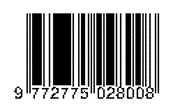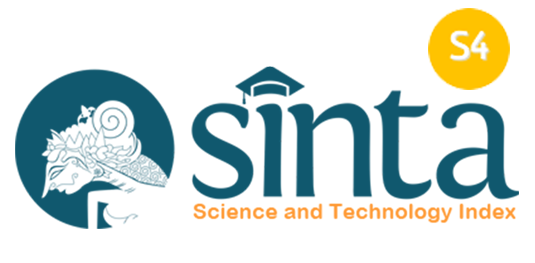APPLICATION OF INDONESIAN NURSING DIAGNOSIS STANDARDS IN NURSING DIAGNOSIS DOCUMENTATION IN CHILDREN WITH DENGUE HEMORRHAGIC FEVER
Downloads
Introduction: The Indonesian National Nurses Association has developed nursing language standards adapted to cultural differences and uniqueness of Indonesian nursing services, namely the Indonesian Nursing Diagnostic Standards. Dengue Hemorrhagic Fever cases in Indonesia have experienced a shortening cycle, which has led to a rise in the incidence rate (IR) and a fall in the case facility rate (CFR). This study was to learn how to describe the application of the Indonesian Nursing Diagnosis Standards (SDKI) in documenting nursing diagnoses in children with Dengue Hemorrhagic Fever (DHF). Methods: Retrospective descriptive research design with secondary data. The secondary data used in the study, namely sourced from medical records from February 1, 2021 - March 31, 2022. The number of samples is 30 medical records using the total sampling technique. Data collection using observation sheet. Data analysis uses univariate analysis. Results: Most of the priority nursing diagnosis labels in DHF pediatric patients are by the Indonesian Nursing Diagnosis Standards, namely hyperthermia. However, all the writing of actual nursing diagnoses does not comply with the Indonesian Nursing Diagnosis Standards, which consists of writing three parts: [problems] related to [cause/related factors] as evidenced by [signs/symptoms], but the writing of nursing diagnoses is only in the form of problems or problems and causes. Conclusions: There needs to be a refreshing knowledge about the Indonesian Nursing Diagnosis Standards to improve the knowledge and skills of nurses in documenting nursing diagnoses.
Berman, A., Synder, S. J., & Frandsen, G. (2022). Kozier & Erb’s Fundamentals of Nursing Concepts, Process, and Practice (Eleventh). Pearson Education Limited.
Ferreira, A. M., Rocha, E. do N. da, Lopes, C. T., Bachion, M. M., Lopes, J. de L., & Barros, A. L. B. L. de. (2016). Nursing Diagnoses in Intensive Care: Cross-Mapping and NANDA-I Taxonomy. Revista Brasileria de Enfermagem, 69(2), 307–315. https://doi.org/10.1590/0034-7167.2016690214i
Handayani, E. T., & Kuntarti, K. (2022). Nurses’ Caring Behavior based on Personality in Indonesia: a Pilot Study for Better-Humanized Healthcare Services. Journal of Public Health Research, 11(2), 2741. https://doi.org/10.4081/jphr.2021.2741
Hasina, S. N., Faizal, I., Putri, R. A., Sari, R. Y., & Rohmawati, R. (2023). Analisa Faktor yang berhubungan dengan Ketepatan Penegakan Diagnosa Keperawatan menurut Standar Diagnosa Keperawatan Indonesia (SDKI). Jurnal Keperawatan, 15(1), 389–398. https://doi.org/10.32583/keperawatan.v15i1.905
Herwawan, J. H., Tomasoa, V. Y., Jotlely, H., Termas, S., & Alfons, M. (2023). Analisis Pengetahuan Perawat terkait Penggunaan 3S (SDKI, SLKI, SIKI) dan Aplikatinya dalam Asuhan Keperawatan. Jurnal Keperawatan, 15(1), 415–422. https://doi.org/10.32583/keperawatan.v15i1.737
Jaya, K., Mien, M., Rasmiati, K., & Suramadhan, S. (2019). Gambaran Pendokumentasian Asuhan Keperawatan di Ruang Rawat Inap RSUD Buton Utara. Jurnal Keperawatan, 02(03), 27–36. https://doi.org/10.46233/jk.v2i03.299
Kementerian Koordinator Bidang Pembangunan Manusia dan Kebudayaan. (2023). Pedoman Penanggulangan DBD di Lingkungan Rumah & Kantor. Kementerian Koordinator Bidang Pembangunan Manusia dan Kebudayaan.
Kementerian Pendayagunaan Aparatur Negara dan Reformasi Birokrasi Republik Indonesia. (2024). Kemenkes : Waspada DBD di Musim Kemarau. https://www.menpan.go.id/site/berita-terkini/berita-daerah/kemenkes-waspada-dbd-di-musim-kemarau#:~:text=Jakarta%2C InfoPublik - Hingga minggu ke,kabupaten%2Fkota di 28 provinsi.
Lum, L. C. S., Ng, C. J., & Khoo, E. M. (2014). Managing Dengue Fever in Primary Care: a Practical Approach. Malaysian Family Physician, 9(2), 2–10.
Mulyani, E., & Lestari, N. E. (2020). Efektifitas Tepid Water Sponge terhadap Penurunan Suhu Tubuh pada Anak dengan Masalah Keperawatan Hipertermia : Studi Kasus. Jurnal Keperawatan Terpadu, 2(1), 7–14.
NANDA International. (2021). NANDA International Nursing Diagnoses: Definitions and Classification 2021-2023. In T. H. Herdman, S. Kamitsuru, & C. T. Lopes (Eds.), NANDA International Nursing Diagnoses: Definitions and Classification 2021-2023 (Twelfth Ed). Thieme. https://doi.org/10.1055/b000000515
Notoatmodjo, S. (2018). Metode Penelitian Kesehatan. Rineka Cipta.
Nurarif, A. H., & Kusuma, H. (2015). Aplikasi: Asuhan Keperawatan Berdasarkan Diagnosa Medis dan NANDA NIC-NOC. Media Action Publishing.
Nurhesti, P. O. Y., Prapti, N. K. G., Kamayani, M. O. A., & Suryawan, P. A. (2020). Analisis Penggunaan Diagnosis Keperawatan Berbasis SDKI dan NANDA. Community of Publishing in Nursing (Coping), 8(2), 118–123. https://doi.org/10.24843/coping.2020.v08.i02.p02
Undang-Undang Republik Indonesia Nomor 38 Tahun 2014 tentang Keperawatan, (2014).
Shang, J.-T., Wang, Y.-Y., Chang, H.-Y., Lo, C.-L., Chen, Y.-H., & Chien, C.-I. (2021). The Relationship between Symptoms and Nursing Diagnoses in Hospitalized Patients with Dengue Fever. Chinese, 68(4), 32–42. https://doi.org/10.6224/JN.202108_68(4).05
Sholihin, S. (2020). Pengembangan Instrumen Dokumentasi Proses Keperawatan berbasis SDKI,SIKI,SLKI pada Pasien PPOK. Universitas Airlangga.
Soewarno, S. A., & Kusumawati, A. (2015). Faktor-Faktor yang berhubungan dengan Kejadian Demam Berdarah Dengue (DBD) di Kecamatan Gajah Mungkur. Medisains : Jurnal Ilmiah Ilmu-Ilmu Kesehatan, 13(2), 24–33. http://dx.doi.org/10.30595/medisains.v13i2.1599
Sukesi, N. (2021). Pelatihan Penerapan Buku Sdki, Slki Dan Siki Pada Perawat Di Charlie Hospital. Jurnal Pengabdi, 4(2), 149. https://doi.org/10.26418/jplp2km.v4i2.46425
Syamsir, S., & Daramusseng, A. (2018). Analisis Spasial Efektifitas Fogging di Wilayah Kerj Puskesmas Makroman, Kota Samarinda. Jurnal Nasional Ilmu Kesehatan, 1(2), 1–7.
Tim Pokja SDKI DPP PPNI. (2017). Standar Diagnosa Keperawatan Indonesia: Definisi dan Indikator Diagnosa (1st ed.). Dewan Pengurus Pusat Persatuan Perawat Nasional Indonesia.
World Health Organization. (2011). Comprehensive Guidelines for Prevention and Control of Dengue and Dengue Haemorrhagic Fever : Revised and expanded edition. In World Health Organization. World Health Organization.
Copyright (c) 2024 Anestasia Pangestu Mei Tyas, Risma Dysta Nuriantari, Amellia Mardhika, Ilkafah Ilkafah, Lailatul Fadliyah, Emuliana Sulpat

This work is licensed under a Creative Commons Attribution 4.0 International License.
Copyright Notice
1. The journal allows the author to hold the copyright of the article without restrictions.
2. The journal allows the author(s) to retain publishing rights without restrictions.
3. The legal formal aspect of journal publication accessibility refers to Creative Commons Attribution (CC BY).














